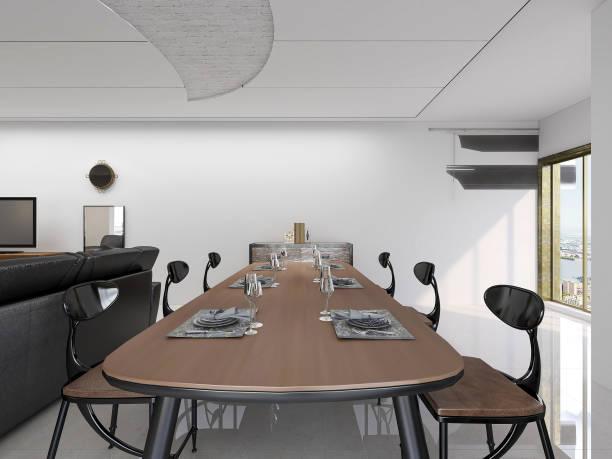Elevating Collaboration: A Deep Dive into Modern Conference Table Design

Introduction to Modern Conference Table Design
In the fast-paced and dynamic landscape of contemporary business, the design of office spaces has evolved to foster collaboration, creativity, and productivity. One crucial element at the heart of this transformation is the modern conference table. No longer just a functional piece of furniture, today’s conference tables are a harmonious blend of form and function, embodying the ethos of modern work environments. This article explores the innovative trends and considerations shaping modern conference table design.
Functionality Meets Technology
In the digital age, conference tables are no longer static surfaces; they are interactive hubs where ideas are shared and decisions are made. Integration of cutting-edge technology has become a hallmark of modern conference table design. Tables equipped with built-in power outlets, wireless charging stations, and video conferencing capabilities have become indispensable tools for seamless collaboration. These features not only enhance functionality but also contribute to a clutter-free and organized workspace.
Adaptable Configurations
Flexibility is a key theme in contemporary office design, and conference tables are no exception. The traditional long rectangular table is giving way to more versatile and adaptable configurations. Circular tables, modular designs, and adjustable layouts cater to different meeting dynamics and team sizes. The ability to reconfigure the table layout easily allows for a dynamic and responsive environment, fostering a sense of inclusivity and collaboration.
Material Innovation
Gone are the days when conference tables were limited to standard wood finishes. Modern designs embrace a wide array of materials, from glass and metal to sustainable options like bamboo and recycled materials. The choice of materials not only affects the aesthetics but also influences the overall feel and functionality of the space. Tables that combine materials, such as wood and metal accents, offer a contemporary and sophisticated look, blending seamlessly with the overall office design.
Ergonomics and Comfort
The modern workforce places a premium on well-being, and this extends to the design of conference tables. Ergonomics plays a crucial role, with designers prioritizing comfortable seating, adjustable table heights, and user-friendly features. The goal is to create a space that encourages engagement and creativity, where participants can focus on the meeting agenda rather than discomfort.
Integration of Nature
Biophilic design, which incorporates natural elements into the built environment, has gained prominence in modern office spaces, and conference table design is no exception. Tables with live-edge wood, planters, or nature-inspired patterns bring a touch of the outdoors indoors, creating a more relaxed and inspiring atmosphere. This connection with nature has been shown to boost creativity, reduce stress, and enhance overall well-being.
Customization and Personalization
No two businesses are the same, and the same holds for their conference rooms. Recognizing this diversity, modern conference table designers are embracing customization and personalization. Companies can now tailor tables to reflect their brand identity, incorporating logos, colors, and unique design elements. This not only reinforces brand cohesion but also adds a distinctive touch to the workspace.
Acoustic Solutions
As open office plans become more prevalent, controlling sound within the workspace is a growing concern. Modern conference tables often integrate acoustic solutions to address this issue. Tables with built-in sound-absorbing materials, such as felt or acoustic panels, help create a quiet and focused environment within the broader office setting. This not only enhances the overall meeting experience but also contributes to increased productivity.
Sustainability
With a growing emphasis on corporate social responsibility, sustainability is a driving force in modern conference table design. Manufacturers are increasingly using eco-friendly materials, exploring energy-efficient production processes, and designing tables with a focus on longevity and recyclability. Sustainable conference tables not only align with environmental values but also contribute to a positive corporate image.
Conclusion
In conclusion, the modern conference table is more than just a piece of furniture; it is a dynamic and integral part of the evolving workplace. As businesses continue to prioritize collaboration, innovation, and employee well-being, conference table design will likely continue to adapt and incorporate new technologies and trends. By seamlessly blending form and function, these tables not only facilitate productive meetings but also contribute to the overall atmosphere and ethos of the modern office space. As we look to the future, the evolution of conference table design will undoubtedly play a pivotal role in shaping the way we work and collaborate.

